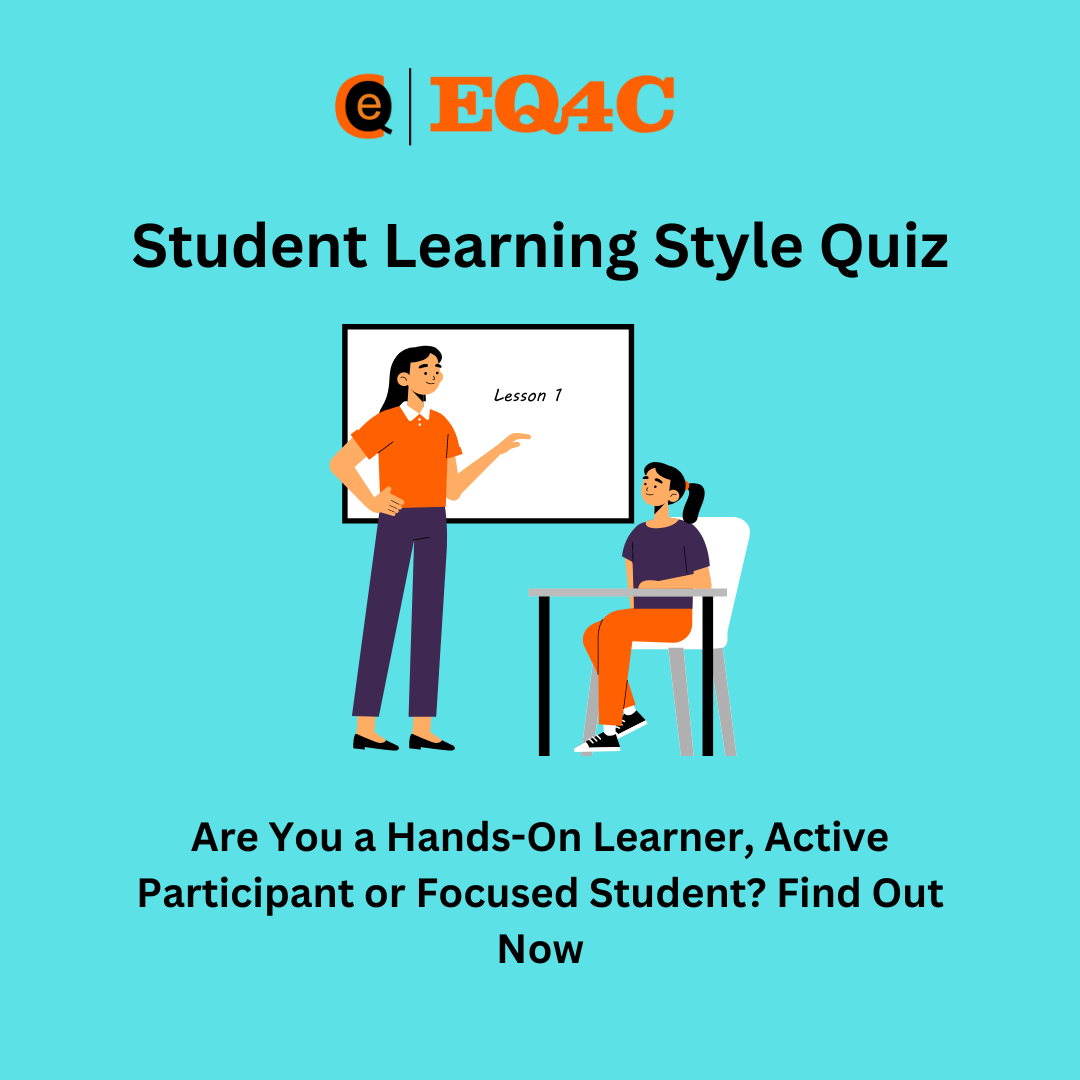Learning Styles: The Key to Unlocking Your Potential in the Classroom

Student Learning Styles
As a student do you know your learning style? or as a teacher, do you want to know the learning styles of your students? or as a parent, do you know the learning style of your child?
In the world of education, it’s important to understand that not all students learn the same way. Just as each student is unique, so too is their approach to learning.
This is why understanding the different learning styles of students is crucial in helping them reach their full potential.
Learning styles are the ways in which individuals approach learning, retaining information, and understanding new material. By understanding and catering to individual learning styles, educators can create a more engaging and effective learning environment for all students.
In this article, we will explore the five most common learning styles: Active Participants, Easily Distracted, Hands-On Learners, Disinterested, and Focused.
These styles are not set in stone, but rather a snapshot of a student’s tendencies at a given time.
Understanding these styles can help educators to identify a student’s strengths and challenges and to adapt their teaching methods to best support their learning.
What are 5 Student Learning Styles?
1. Active Participants
Active Participants are students who consider themselves to be an integral part of the learning process. They actively engage in class, participate in group activities, and collaborate with others. They are often described as confident, communicative, and curious learners.
Advantages of Being an Active Participant in Class
Being an active participant in class has numerous advantages, including:
- Increased engagement in learning
- Better understanding of the material
- Improved critical thinking skills
- Enhanced collaboration skills
- Improved self-esteem and confidence
Strategies for Teachers to Engage Active Participants in Learning
Teachers can engage active participants in learning by:
- Encouraging participation through group activities and discussions
- Providing opportunities for hands-on learning experiences
- Allowing for choice in assignments and projects
- Encouraging active participants to share their thoughts and ideas
- Creating an inclusive and supportive learning environment
Tips for Active Participants to Maximize Their Learning Potential
Active participants can maximize their learning potential by:
- Continuously seeking out new learning opportunities
- Actively engaging in class and group activities
- Asking questions and seeking clarification
- Collaborating with others to gain new perspectives
- Reflecting on their own learning process and seeking out areas for improvement.
2. Easily Distracted
Easily distracted students are those who find it challenging to maintain their focus during class. They may find themselves constantly shifting their attention from one thing to another, leading to difficulties in retaining information and engaging in learning. Characteristics of easily distracted students include a short attention span, tendency to daydream, and difficulty in staying organized.
Factors Contributing to Distraction in Class
There are several factors that contribute to distraction in class, including external distractions such as noise and movement, internal distractions such as thoughts and emotions, and environmental distractions such as uncomfortable seating arrangements. Additionally, students who are easily distracted may also be struggling with underlying issues such as ADHD or anxiety.
Strategies for Teachers to Minimize Distraction in Class
Teachers play a critical role in minimizing distraction in class and helping easily distracted students stay focused. Some strategies include creating a visually and audibly engaging learning environment, providing opportunities for physical movement and hands-on learning, and breaking up lessons into smaller, manageable chunks. Additionally, teachers can also provide individualized support and accommodations, such as seating arrangements that minimize distraction, to students who are easily distracted.
Tips for Easily Distracted Students to Stay Focused
Easily distracted students can also take steps to improve their focus in class. Some tips include setting realistic goals, creating a study schedule, finding a quiet study space, and engaging in physical activity to release pent-up energy. Additionally, students can also try mindfulness and relaxation techniques, such as deep breathing or meditation, to help maintain focus.
3. Hands-On Learners
Hands-On Learners are students who prefer to learn by doing. They are often kinesthetic learners, meaning they need to be physically engaged in the learning process in order to truly understand and retain information. They may struggle with passive learning methods like lectures and reading, but excel when given the opportunity to get their hands dirty and experiment with new ideas.
Importance of Hands-On Learning in Education
Hands-on learning is a crucial aspect of education for several reasons. It allows students to engage with the material in a way that is meaningful and relevant to them. It also helps them build practical skills and knowledge, which can be applied to real-life situations. Furthermore, hands-on learning can also foster creativity and encourage students to think outside the box.
Strategies for Teachers to Incorporate Hands-On Activities in Class
Teachers can incorporate hands-on activities in class in several ways:
- Project-based learning: Assign projects that allow students to apply what they have learned in class to real-life situations
- Experiments and demonstrations: Use experiments and demonstrations to make the material more tangible and memorable
- Group work: Encourage students to work in small groups on hands-on activities that allow them to collaborate and learn from each other
- Field trips: Organize field trips that allow students to experience the material firsthand
Tips for Hands-On Learners to Maximize Their Learning Potential
Hands-On Learners can maximize their learning potential by:
- Seeking out hands-on activities: Look for opportunities to engage in hands-on activities both inside and outside of class
- Participating in group work: Collaborating with others on hands-on projects can help deepen their understanding of the material
- Being proactive: Don’t be afraid to take the initiative and suggest hands-on activities in class
- Keeping a hands-on learning journal: Record their thoughts and experiences from hands-on activities to reflect on what they have learned and what they still need to work on.
4. Disinterested – Learning Style
Disinterested students are those who lack enthusiasm or show little interest in the material being learned in class. They may appear disinterested or detached, struggle to focus, or simply not engage with the material being taught.
Factors Contributing to Disinterest in Class
There can be many reasons why students become disinterested in class, including boredom, lack of relevance, difficulty understanding the material, and distractions from other sources.
Strategies for Teachers to Engage Disinterested Students in Learning
To engage disinterested students, teachers can try the following strategies:
- Make the material more relevant to students’ lives by connecting it to real-world examples and experiences
- Encourage participation by involving students in interactive activities, discussions, and projects
- Personalize the learning experience by using a variety of teaching styles and approaches to cater to individual needs and learning styles
- Foster a positive and supportive classroom environment by creating a safe space for students to ask questions, express opinions, and participate
Tips for Disinterested Students to Develop Interest in Class
For disinterested students, it’s important to find ways to develop a passion for learning. Here are some tips to help:
- Identify areas of interest and try to connect them to the material being taught in class
- Set personal learning goals and track progress towards achieving them
- Participate in class and ask questions to deepen understanding
- Take advantage of resources like tutors, study groups, and online resources to help with subjects that are difficult to grasp
- Find a mentor or role model who is passionate about the subjects being studied and seek their guidance and support.
5. Focused
Definition and Characteristics of Focused Students
Focused students are those who have the ability to concentrate and pay attention in class without being easily distracted. They are able to stay on task and process information effectively, allowing them to absorb and retain information effectively. These students are often highly motivated and have a strong desire to learn and achieve their goals.
Advantages of Being a Focused Student in Class
Being a focused student has many advantages, including higher academic achievement, improved critical thinking skills, and greater retention of information. Focused students are also able to process information more quickly and efficiently, allowing them to engage more deeply in the material being learned. This leads to a more meaningful and fulfilling learning experience.
Strategies for Teachers to Maintain Focus in Class
To help maintain focus in class, teachers can employ strategies such as creating a structured learning environment, incorporating hands-on activities and interactive discussions, and setting clear expectations for behavior and focus. Additionally, teachers can provide regular breaks and allow for movement, as this can help students stay alert and engaged.
Tips for Focused Students to Maximize Their Learning Potential
Focused students can maximize their learning potential by developing good study habits, setting clear goals, and seeking out opportunities for hands-on learning. They can also work to eliminate distractions, such as turning off their phone or finding a quiet place to study. Additionally, focused students can engage in regular physical activity and maintain a healthy diet, as these habits have been shown to improve focus and concentration.
Quick Recap on Learning Styles
In this article, we have explored the five distinct learning styles – Active Participants, Easily Distracted, Hands-On Learners, Disinterested, and Focused. Each learning style has its own definition, characteristics, advantages, and challenges, and it’s important to understand these to maximize the potential of each student.
Importance of understanding learning styles for teachers, students, and parents
As a teacher, understanding your students’ learning styles can help you design lessons that cater to their unique strengths and weaknesses, and engage them in the learning process.
Similarly, for students, knowing their learning style can help them tailor their study habits and improve their academic performance.
Parents, too, can play a crucial role in their child’s education by understanding their child’s learning style and providing the necessary support to help them reach their full potential.
Want to identify your learning style now – Take a our Learning Styles Quiz
Final thoughts on the impact of learning styles on education
Ultimately, understanding learning styles is essential for creating an inclusive and effective educational environment. By acknowledging the diversity of learning styles, teachers and schools can provide students with the support they need to succeed and reach their full potential. Whether you’re a student, a teacher, or a parent, learning about learning styles can be a valuable tool in your educational journey.



One Comment